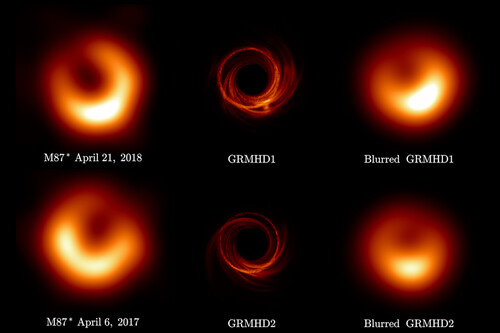In 2017, the Event Horizon Telescope (EHT) released the first-ever image of a black hole. While groundbreaking, some experts questioned its validity. To settle the debate, the EHT captured a second image of M87* in 2018. Released in 2024 after six years of meticulous processing, the new image not only confirmed the original but also reinforced Albert Einstein’s theory of general relativity.
The world’s largest radio telescope. Capturing a black hole’s image required an enormous telescope—one spanning roughly 6,000 miles. Since the Earth has a diameter of almost 8,000 miles, scientists took a more reasonable route: They used interferometry to link multiple telescopes worldwide, effectively creating a planet-sized radio telescope.
The EHT collected 250 petabytes of data weekly. Processing this massive dataset took years. In that time, the project added a new telescope (Greenland GLT), which contributed to the second image of M87*.
Six years of data processing. The second image, taken in April 2018, validates the 2017 results. The persistent size of the black hole’s shadow confirms the original estimate of its dimensions, addressing concerns about reliance on simulations.
Additionally, the image reveals that the surrounding ring of matter rotates, with its brightest region shifting 30 degrees—aligning with existing black hole models.
Einstein was right. M87*, a supermassive black hole 55 million light-years away, exerts immense gravitational influence, shaping its surrounding magnetic fields and ejecting matter at near-light speeds. The 2018 image once again supports Einstein’s predictions: The event horizon’s diameter directly correlates with the black hole’s mass, creating the central shadow his equations foresaw over a century ago.
Why it looks like a donut. The glowing ring—an accretion disk—should be much thinner. However, as its light travels across space, interstellar dust scatters it, causing the image to appear blurred and diffused.
Despite this, the resolution remains sharp enough to confirm the black hole’s rotation and its alignment with a high-speed relativistic jet.
The importance of reproducibility. Although the process took six years, the ability to replicate results is a cornerstone of scientific progress. This second image solidifies the EHT’s findings and marks a major achievement in international scientific collaboration.
Future analyses will provide deeper insights into black hole physics, magnetic fields, and plasma flows within accretion disks.
The next frontier is dynamic imaging. The Next Generation EHT aims to capture a time-lapse video of M87*, showing its evolution in unprecedented detail. With improved resolution and expanded frequency ranges, this endeavor will further unravel the mysteries of black holes—all thanks to the collaborative efforts of observatories worldwide.
Image | Event Horizon Telescope



Log in to leave a comment